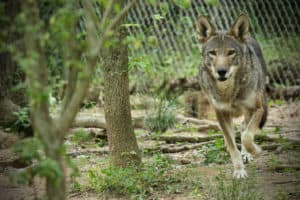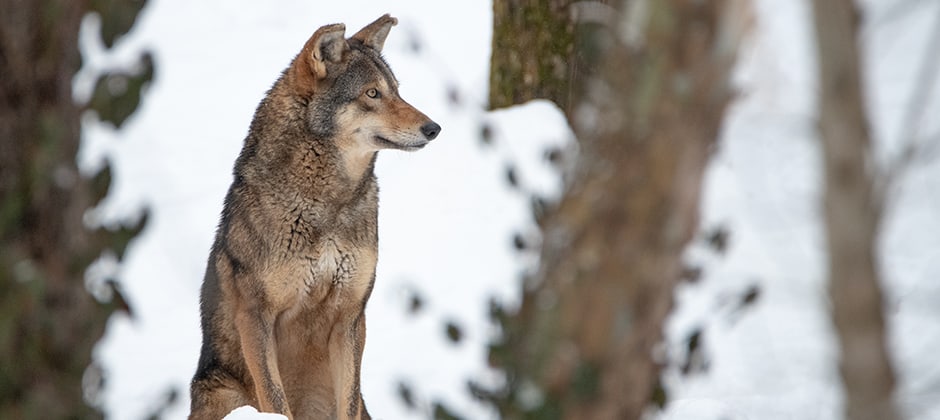Share this article
Could poachers jeopardize red wolf reintroduction?
An active minority of poachers could be driving red wolves back toward extirpation even though most North Carolinians support the conservation and reintroduction efforts of the experimental population.
Surveys reveal that one way of controlling poaching of red wolves by a small number of people in North Carolina might be better policing and a stricter enforcement of penalties.
“There needs to be better enforcement,” said Suzanne Agan, an instructor of environment science at Kennesaw State University in Georgia and the first author of a study published recently in Biological Conservation. “The Fish and Wildlife Service is learning that they’ve got the support of people that live there.”
Agan, who was a PhD student at Antioch University New England at the time of the research, and her co-authors wanted to get a better idea of public support for the red wolf (Canis rufus) program in northeastern North Carolina. An experimental population of red wolves has been barely clinging on there since reintroduction efforts began in 1987. Only an estimated 20 wolves live in the wild in this area, though roughly 245 wolves are kept in captive breeding facilities across the U.S. Other recent research has indicated that red wolf genes are present in some wolves on the Gulf Coast.
Poaching has been a big threat to the fledgling population, which the U.S. Fish and Wildlife Service designates as non-essential and experimental. Some of the poaching is accidental—hunters licensed to harvest coyotes (Canis latrans) sometimes confuse the latter with red wolves. But in other cases, managers have found, poachers are targeting red wolves. This persecution is derailing many of the efforts of captive breeding programs and reintroductions.
“We know that the solutions have been ineffective to this point,” Agan said.

About 20 red wolves are estimated to live in the wild in North Carolina. Roughly 245 others are kept in captive breeding facilities across the U.S. Credit: Suzanne Agan
She and her co-authors conducted a couple different survey types. Using a voluntary online survey, they captured the opinions of residents living in the county where red wolves currently are found and in some surrounding counties. They also conducted a blind survey of residents who owned at least 10 acres of land. To get a wider swath of opinions, they didn’t tell them the subject of the survey beforehand.
“Overwhelmingly, we found that people were very supportive,” Agan said about the red wolf program. “We had a large degree of acceptance.”
Agan said she was surprised by how widespread the support was, but it wasn’t universal. “There was this very small minority of people that said they would absolutely kill any red wolf they came across,” she said. Given the tiny number of wolves in the wild, she worries that a few people intent on killing them could doom their recovery.
“If you kill a breeding red wolf, you can take out the entire litter for that year,” Agan said. Even if poachers kill a breeding male, it could spell problems for a litter of pups as another male may come in and kill them so he can breed with the female.
Agan suggested restricting coyote hunting permits to locals who may be better able to distinguish the two species, and better enforcement of poaching laws.
By emphasizing the negative consequences of killing red wolves to conservation-minded hunters, Agan said, law-abiding hunters could be enlisted in efforts to reduce poaching. This could help curtail those who resent the wolves’ presence or fear it may lead to government intervention on their land.
“Community support for protection and opposition to poaching is key to conservation,” She said. “Appealing to law-abiding hunters may help to reach this small group who engage in illegal activity.”
Header Image: Public opinion is mostly supportive of red wolf reintroduction in North Carolina, researchers found, but a few poachers can set back the program. Credit: Endangered Wolf Center








